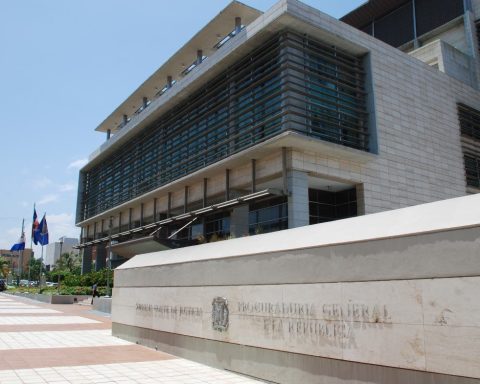The Liniers Treasury Market closed its doors this Friday with the last auction after 122 years of activitybeginning a new stage in the Cañuelas district of Buenos Aires, where the brand new Mercado Agro Ganadero (MAG) will be located from next week.
A total of 7,500 head of cattle entered the last day marked by nostalgia and memories among the workers of the centennial establishment.
The last sales round started at 7:30 a.m. with the usual bidding between buyers, with the last auction taking place twenty minutes before 11:00 a.m., at which time the employees were summoned to an act in which medals were awarded and the present with choripanes and music from various folk groups.
In a dialogue with Télam, Oscar Subarroca, president of Mercado de Liniers SA, concessionaire of the establishment since 1992, stated: “It is a day that we have all been waiting for, where we all have our hearts in our skin; a very special experience to say goodbye to this glorious and traditional Liniers Market”.
Introducing one of the first auctions of the day, a consignee from Tatersall Monastery said: “It is a historic day for everyone. This great enclosure that we have, where we lived so many adventures and so many rains, left a mark on all of us, but this story continues. Thank you very much for coming.”
Then, the characteristic back and forth began: “I have 60 to open, 62, 62, 65”, the man shouted between the pens, while from the bridges people pushed each other to try to acquire the coveted bovine.
“How much does Carlitos weigh?”, Asked one of those who bid for the prices while from another corner they shouted “Beware of the cows!”.

If there is something that characterized the Liniers market since its inception in 1901, it was the familiarity among its people, with generations of workers, buyers and consignees stepping on its corrals.
The trading day was “normal”, despite the special date, according to Jorge Longobuco, the Market’s operations manager.
“Several tests have been carried out in Cañuelas and everything works perfectly.. It is much more accessible for the workers, more modern and more sustainable”, explained the director, whose grandfather already worked in the Market and brought troops of 100 animals per lease across the La Noria Bridge, in the already distant 1930s.
According to the authorities, one of the main benefits of the new market will be the reduction in logistics and transportation costs, by avoiding the entry of trucks into the City of Buenos Aires, which until today, entered the market and then they would go back with the cattle delivered to the butchers, refrigerators and supermarkets; an operation that, certainly, was impractical.
Mercedes, San Vicente, Luján: there were several destinations proposed for the movewhich has been discussed since the 1960s.

In 2001, Law 622 was passed by the Buenos Aires Legislature, which prohibited the entry of live cattle with the exception of those destined for exhibitions or special activities.
Nevertheless, Only in 2018 was the land in Cañuelas located on Provincial Route 6 chosen and purchased. where, with delays due to coronavirus restrictions, construction of the new establishment began in 2020, with an investment of US$20 million.
The MAG has an area of 110 hectares (compared to the current 32 in Liniers), roofed corrals and a capacity for 12,000 head of cattle per day.
As a novelty, service providers will have a space within the new complexin addition to building an international chain hotel with 120 rooms, a convention center, housing with priority for the employees of the Market, a service station, and a shopping and gastronomic center.

In that sense, some of the authorities pointed out to Télam that the complex will have a point of similarity with the annual Expoagro fair.
Another focus of the project will be the ecological treatment of waste and effluentsin addition to the use of rainwater for washing.
The new facilities will allow the entry of 12,000 heads per day with the possibility of expanding in the future to receive 6,000 more; Y the expectation is that the new market will have the entry of “20,000 to 30,000 heads per week”according to Longobuco.
“Today the city and modernity won us over, and they deserve to be left alone,” Longobuco added in his final speech, referring to the questions about the noise of the roads, the bellowing of the cows and the smell of manure from them. , which, among other reasons, prompted the decision to move.
The fate of his estate is still unknown, but the market will remain in the history of the neighborhood: New Chicago, Mataderos, Avenida de los Corrales. Names that will keep alive the mythical market that said goodbye.

















